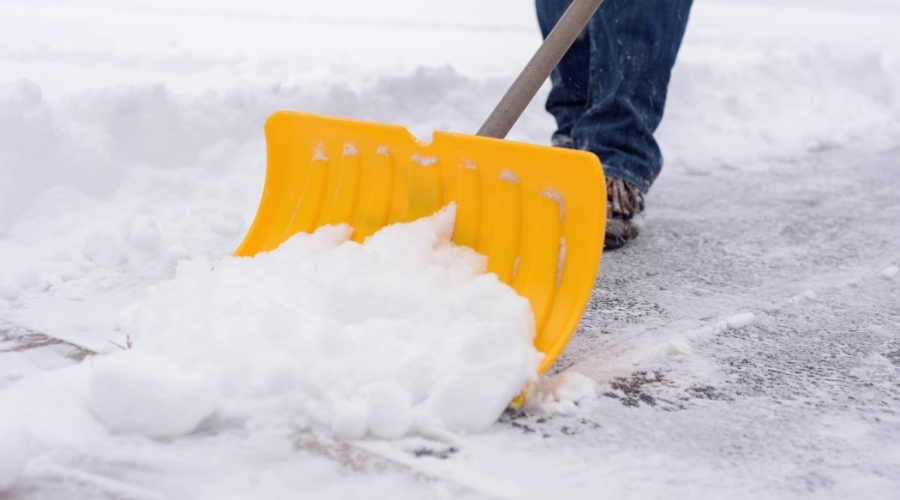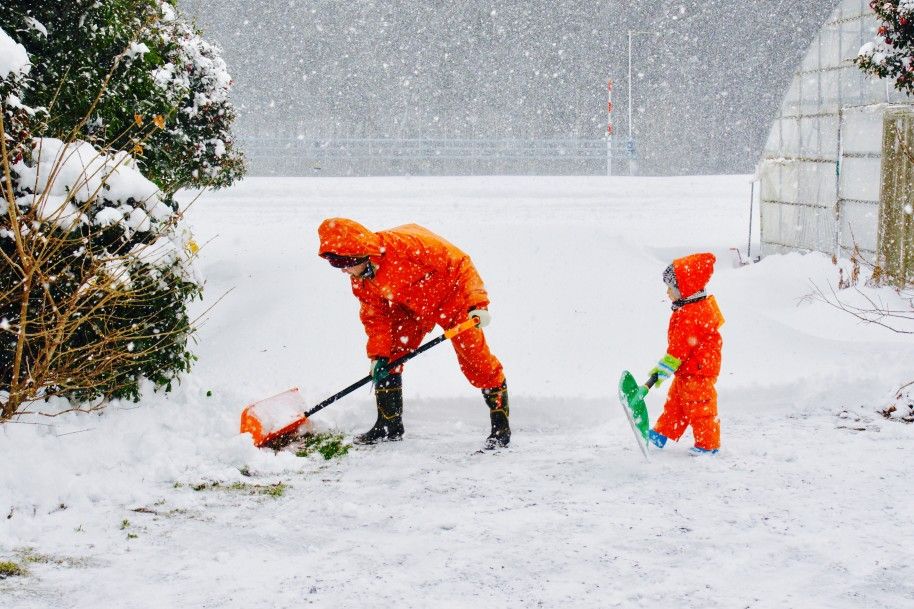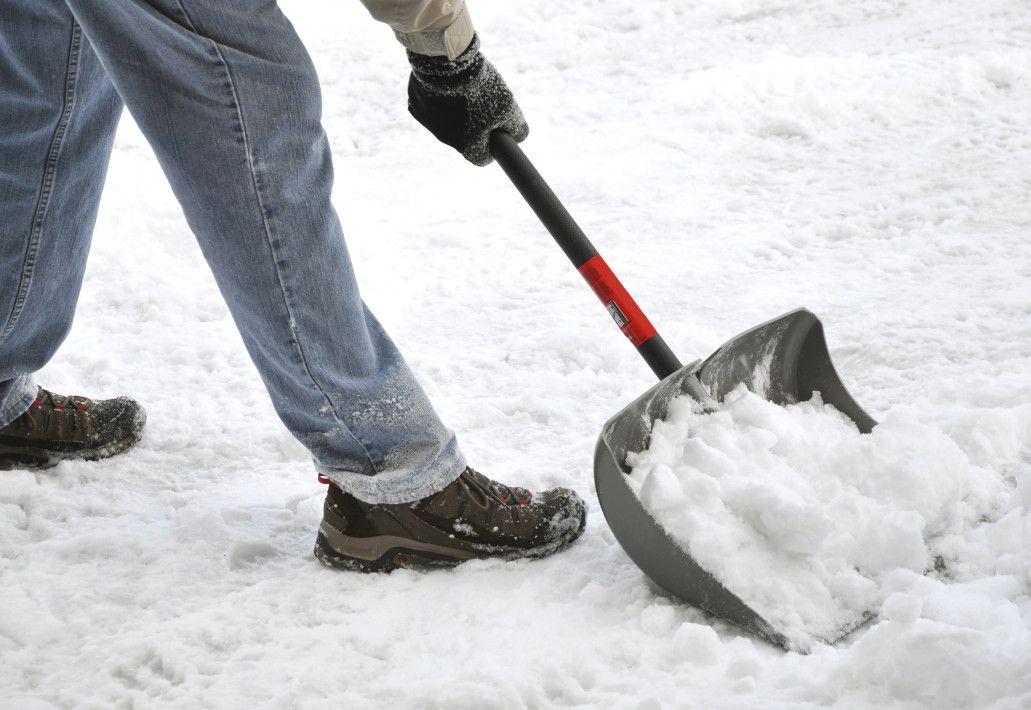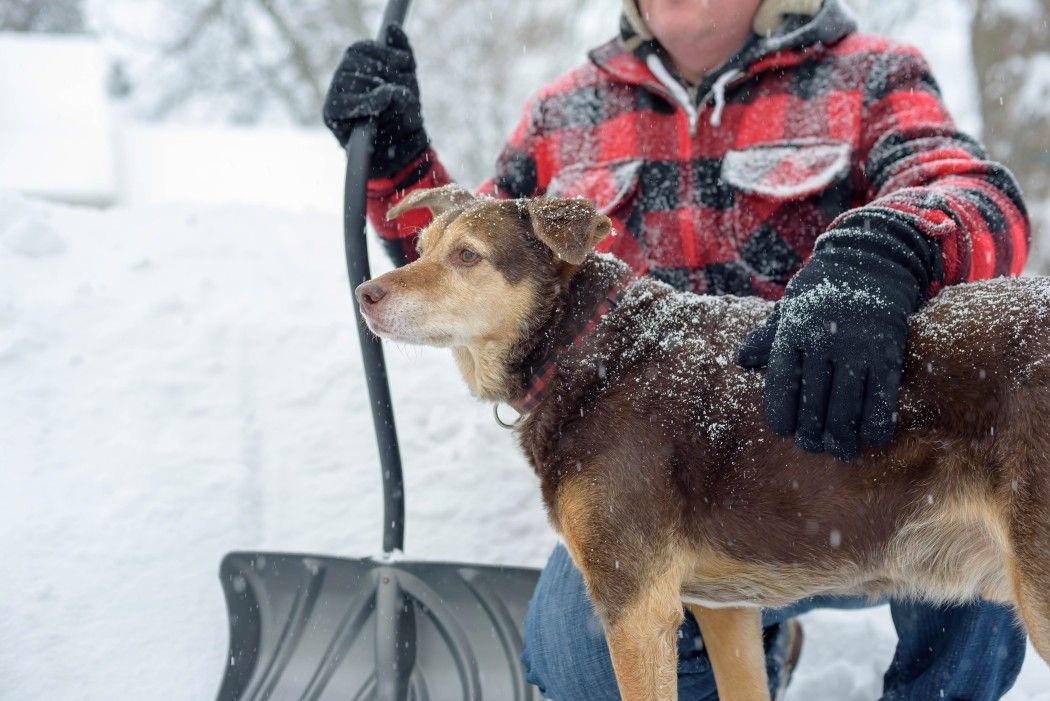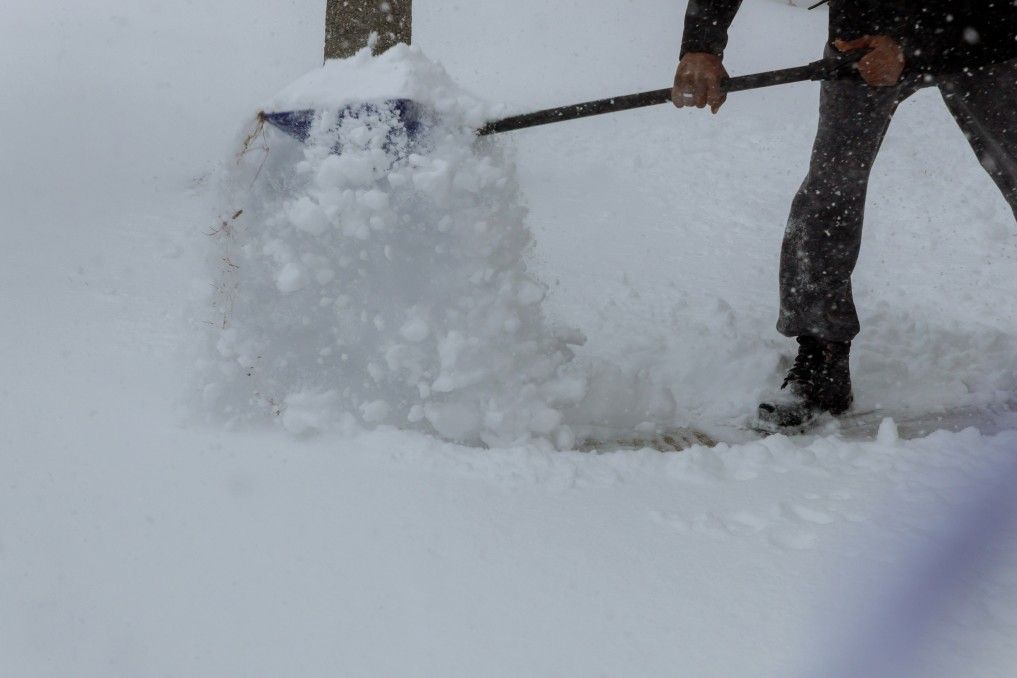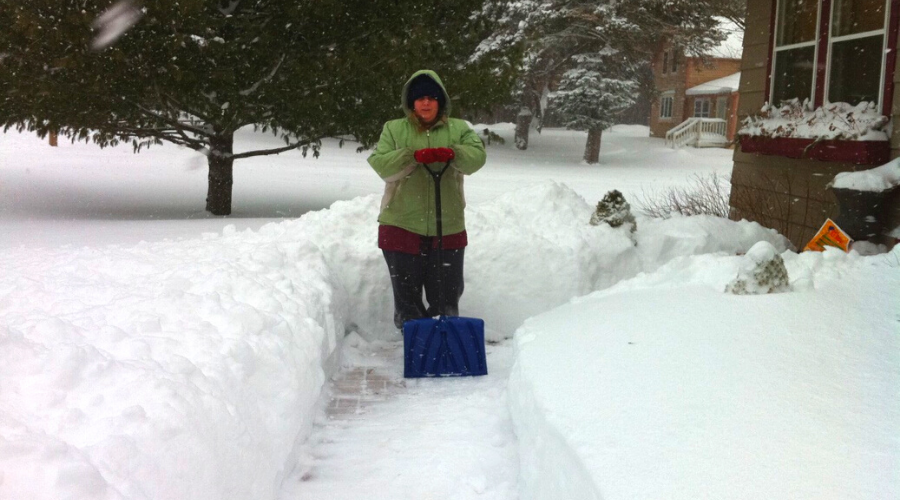Knowing how to shovel snow most efficiently and safely is crucial when you're the one stuck out in the cold, chucking powder and ice off of the sidewalks and driveway. The good thing about staying safe and efficiently shoveling snow is that it's easy to do once you have the right snow shovel and know-how. This is everything you need to know about shoveling snow safer and more efficiently, including some of our very favorite tips and tricks.
Snow Shoveling Risks
One inescapable and seasonal responsibility that comes with homeownership is shoveling snow. Depending on where you live, you may have to do it more often annually than other homeowners.
However, you should know that overexerted and sustained snow shoveling for over half an hour puts you at an increased risk of heart attack or cardiovascular stress... and sometimes even death. According to the United States Nationwide Children's Hospital, over 1,647 people have died from shoveling snow between 1990 and 2006.
It's important to remember that snow can weigh hundreds of pounds when compacted in relatively sparse-looking cubic feet of space. Some medical experts believe that over 100 people, or more, die every year just from shoveling snow. Shoveling 8 inches of snow over a sustained period can put you at an increased risk of heart attack, especially if you suffer from cardiovascular disease.
How to Shovel Snow Safely and Efficiently
No one is recommending that you let your driveway or walkway become snowbanks for a season. What is essential to understand is that there are many safe and efficient ways to shovel snow without the risk of physical harm, even when it comes to shoveling snow faster.
Knowing is half the battle for avoiding risk, including such basics as knowing the best times to shovel snow. Preventive measures tips for safe snow shoveling, like salting your driveway, should be used when possible.
Start a Moderate Exercise Program if You Live in High-Volume Snow Region.
If you live a sedentary lifestyle in your personal and professional life and live in a region with high volumes of seasonal snow, trying to shovel hundreds of pounds of snow in under an hour can be a life-threatening activity.
If you are unused to rigorous physical activity, lifting heavy shovels of snow will dangerously strain your arm muscles and heart. This activity will also cause your heart rate and blood pressure to surge dangerously.
Meanwhile, the cold air will constrict your blood vessels and make you feel fatigued. The more snow you try to shovel, the more you compound the severity of these conditions.
If you live in a high-snow volume area, try to get in shape weeks before the snowfall. Perform a daily or every-other-day cardiovascular exercise routine of 30-minutes to 40-minutes.
Delegate Snow Shoveling to Others if You're Over Age 55.
If you are over 55 and/or have a medical history of cardiovascular disease, stroke, or heart problems, have someone else shovel the snow.
If you are over 55, smoke habitually, and are overweight, then it is really dangerous for you to be shoveling snow.
In circumstances where there is no other option, take frequent breaks and push the snow in small amounts instead of lifting large amounts. Use a snow blower if possible. Although snow shoveling looks like a rather benign household chore, this activity is extremely taxing on the heart.
Dress in Layers.
Don't think that sweating and working hard will keep you warm in brisk, cold weather. The exact opposite is true. As you work strenuously and overexert yourself in cold weather shoveling snow, the ambient cold weather will dangerously siphon away your precious body heat.
Sweating while dressed in light layers in cold weather also siphons away body heat. Meanwhile, you will become ever more fatigued and strained while shoveling snow.
Make sure that you are dressed in warm, comfortable dress layers that won't restrict body movement.
Slip-Proof Your Footwear.
Wear slip-resistant boots and footwear as you shovel. Invest in removable cleats if needed. Also, add layers of salt or sand to your work-walkways as you shovel snow.
Don't Hold Your Breath.
Shovel snow in fluid, rhythmic motions. Don't shovel too much snow, and don't overexert yourself. Whatever you do, don't hold your breath while you are shoveling snow.
Holding your breath strains your body, constricts your blood vessels, and lessens the amount of blood and oxygenation your body needs to complete the task.
You may also increase the risk of feeling light-headed, dizzy, or fainting as you work. Breath in-and-out normally as you shovel snow.
Take Regular Breaks.
Try to aim for sustained snow shoveling work periods of 15-minutes to 30-minutes. Be aware of your breathing and heart rate as you shovel snow.
Take a 10-minute break every 20-minutes or as often as needed. Don't try to physically power through shoveling hundreds of pounds of snow for an hour or two.
You are going to exhaust yourself quickly with this activity. Give your body a chance to recuperate briefly.
Don't Shovel Snow After Eating or Smoking.
Wait at least an hour after eating before you begin shoveling snow. Your body must metabolize a lot of energy to digest food and break it down into nutrients. If you begin shoveling snow right after eating, you will tax your body of even more energy as it digests your meal. You also run the risk of initiating muscle cramping as you shovel snow.
Smoking constricts your blood vessels, especially in your lungs. Why would you increase the risks of labored breathing or coughing while shoveling snow?
Lift With Your Legs.
Did you know that over 140,000 Americans had to go to the hospital over various injuries they sustained while shoveling snow?
Many people experienced severe back injuries and lower back muscle strain while shoveling snow. Lift with your legs as you shovel snow. Be mindful of how your back muscles are feeling as you shovel.
Don't Throw Snow Over Your Shoulder.
Always endeavor to use good form when shoveling snow. Avoid lifting large shovels of snow, bending at the waist or turning your torso, and then throwing large amounts of snow over your shoulder.
All you are doing is taxing your heart and straining your muscles. As you lift each shovelful of snow, lifting with your legs all the time, walk over to dump the snow in a pile. Work smarter, not harder.
Don't Re-Shovel the Same Piles of Snow.
Map out exactly where you will designate your snow piles. That way, you can shovel and dump your snow progressively closer to your snow piles.
Try the "rectangles" grid technique. Work in rectangle formation, shoveling snow from the center of the rectangle and dumping it along a rectangle grid corner. Re-shoveling the same piles of snow and aimlessly shifting hundreds of pounds of snow is a waste of time and a taxing strain on your body.
FAQ: How to Shovel Snow Most Efficiently and Safely
Is There an Optimum Time to Shovel Snow?
Try not to shovel snow between 6 AM and 10 AM. Your circadian rhythms, the internal biological clock determining natural work and rest periods for the human body, fluctuate during this time. You are more likely to suffer a heart attack during this time if you shovel snow with pre-existing heart disease.
How Heavy is One Cubic Foot of Snow?
One cubic foot of snow could weigh as much as 15 to 20 pounds. If you try to shovel one to two feet of snow from a driveway or walkway, you are easily shoveling hundreds of pounds of snow.
Is Shoveling Snow Dangerous for Everyone?
Only if you are over age 55, overweight, have a history of cardiovascular disease, or lead a sustained sedentary lifestyle. As long as you are relatively healthy, take breaks, and follow the advice in this article, you can safely and efficiently shovel snow.
A Final Word About Shoveling Snow Efficiently and Safely
Hate or love it (probably hate it), shoveling snow is something that we all have to deal with at some point. That said, being as safe and efficient as possible while doing so genuinely matters. Shoveling snow comes with its unique challenges, some of which are quite dangerous. Hopefully, our above-listed tips help you keep things safe and effective out there in the snow.
Do you have a great snow shovel tip, trick, or piece of safety advice that you think our audience would benefit from? If so, we'd love to hear all about it in the comments section below! Also, let us know which you prefer for removing snow, shovels, or blowers. Happy (and safe) shoveling!

